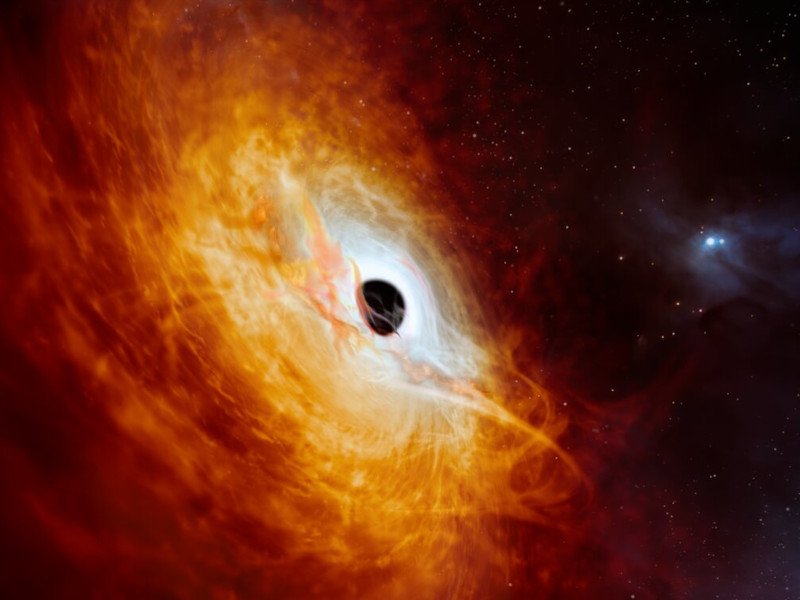
The massive quasar is as bright as 500trn suns and appears to be growing in mass by the equivalent of one sun every day.
A new cosmic discovery is likely to leave many scratching their heads, as the sheer scale of this phenomenon is hard to imagine.
The new discovery is a quasar – the blazing centre of a galaxy powered by a supermassive black hole. The process of gases being sucked up by this black hole is so energetic that vast amounts of light are emitted, making them the brightest objects in the universe.
They also tend to be ancient and extremely far away. The latest quasar to be discovered, J0529-4351, is roughly 12bn light years away from the Earth. For context, it is believed that the universe is roughly 13.7bn years old.
The newly discovered quasar appears to be massive and shines 500trn times brighter than our own sun. Researchers at the European Southern Observatory (ESO) said that makes it the brightest object we have discovered in the universe.
This might confuse those who remember the supposed record-breaking quasar discovered in 2019, which appeared to be as bright as 600trn suns. But that quasar’s brightness was magnified by a ‘lensing’ galaxy between us and the distant object. In reality, it is believed the earlier discovery is as bright as 11trn suns.
But the new quasar appears to be record-breaking in more ways than one. With a massive amount of light being emitted, it is believed that this quasar has a mass of 17bn suns and consumes the mass of one sun a day. This makes it not only the brightest quasar to date, but also the fastest growing one too.
Samuel Lai, a PhD student at the Australian National University (ANU) and a co-author of the study about the quasar, said the light is coming from an accretion disc – the matter that orbits and falls into the black hole – that is seven light years in diameter. Lai said this could be “the largest accretion disc in the universe”.
Too bright even for a quasar
The massive quasar was investigated using the ESO’s Very Large Telescope (VLT), but the organisation said it was spotted in sky surveys dating back to the 1980s. The reason it wasn’t discovered until now appears to be due to the intensity of its light – causing it to be mistaken as a star.
The ESO said an automated analysis of data from its Gaia satellite assumed the object was too bright to be a quasar, but researchers identified it as a distant quasar last year using observations from an ANU telescope.
The researchers confirmed that the object was a quasar and gained key insights into the cosmic object thanks to the ESO’s VLT and its precise X-shooter spectrograph. The ESO plans to make further observations on this quasar after it upgrades the telescope’s interferometer, which is designed to accurately measure the mass of black holes.
The organisation also said its Extremely Large Telescope (ELT) will make identifying and characterising elusive objects like this quasar more feasible. This massive telescope is currently under construction in the Atacama Desert in Chile and is expected to begin its operations in 2028.
Find out how emerging tech trends are transforming tomorrow with our new podcast, Future Human: The Series. Listen now on Spotify, on Apple or wherever you get your podcasts.

